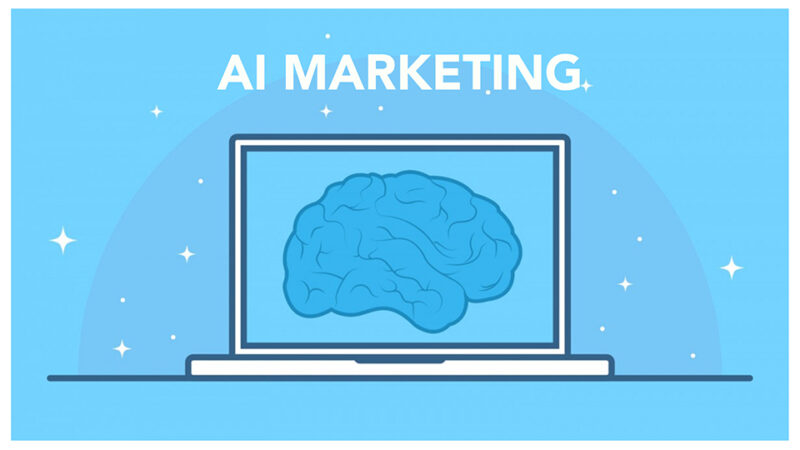4 Ways AI is Transforming Marketing Without You Knowing It
May 30, 2019

Newsflash: Artificial Intelligence, or AI, isn’t what you think it is. It’s not evil computers taking over the world. And it’s definitely not robots falling in love (although this writer will defend the cinematic merits of WALL‑E all day).
When it comes to marketing, AI refers to the use of machines to anticipate decisions and improve the customer journey. That’s it. Really.
With AI already present in much of our daily lives (from Netflix algorithms to virtual assistants), marketers are capitalizing in big ways.
In fact, the latest “State of Marketing” report from Salesforce says that 51 percent of surveyed marketing leaders are currently using AI, while an additional 27 percent plan to start using it within the next two years.
What follows is a quick-hitting rundown of four of the best marketing uses for AI in 2019. So, take notes. Or, you know, just have Siri take notes for you. We don’t mind.
1. Chatbots
You’ve probably been noticing more and more websites incorporating these helpful customer service assistants in their home page design. Usually appearing as a small dialog box, chatbots prompt site visitors by offering to answer any questions they might have. When users submit questions, the bot will provide automated responses based on factors such as keywords and location.
Chatbots are becoming so sophisticated that most users can’t even tell the difference between a simulated conversation and one conducted by a real human (one survey reports that two-thirds of customers don’t know that they’re already interacting with AI tools like these).
Companies left and right are adopting chatbot technology in an effort to improve the customer journey. As a result, marketing teams can now respond to more questions and capture more leads than ever before.
2. Virtual Assistants
By this point, most everyone is familiar with virtual assistants like Apple’s Siri or Amazon’s Alexa. We at Applied Art & Technology even poked fun at our Iowa roots with an Alexa parody video. But the marketing potential for these AI-powered devices is no laughing matter — especially when we consider the power of voice.
Unlike chatbots, virtual assistants have the advantage of responding to users’ questions via synthesized voices. With more people on the go these days, voice search has become an extremely popular, hands-free way to get information.
Marketers can take advantage by paying for sponsored search results, or “voice ads.” But a more effective — and less intrusive — way to appear in voice searches is to adjust your company’s SEO (search engine optimization) to align with the way people actually speak. (For example, a traditional Google search for BBQ restaurants might be typed out as “top BBQ restaurants in Des Moines,” while a person using voice search might ask the question “What are the top BBQ restaurants near me?”).
3. Simplified SEO
Speaking of SEO, AI is starting to play a more significant role in automating the many tasks involved with optimizing web content.
Tedious processes like identifying keywords, inserting backlinks and varying different header classes can be completed more efficiently with automated programs. This allows us human marketers to spend more time focused on creating original and compelling content, such as blog posts, which can then be optimized using AI.
AI can also process important insights that can impact search visibility at a much faster rate than humans. Market trends, traffic analytics and pay-per-click spend management can be handed off to an AI program, giving you more power when it comes to influencing your content’s search rank.
4. AI Split Testing
Although traditional A/B testing can be useful for optimizing content, the process has its limitations.
For one thing, A/B tests only allow you to experiment with two static variations of a piece of content — whether that be a landing page with two different header images or a display ad with two different copy descriptions. But now, thanks to AI split testing, marketers can have their content “self-optimize” in real time.
AI programs can create unique variations of a landing page, for example, based on the behavior (and even the location) of each individual user. The result is a much more personalized form of split testing, with a much larger possible set of variations.
AI allows you to introduce C, D, E, F (and so on) variables into the equation so you can experiment with, say, six header images and eight body descriptions. Machine learning algorithms can then match these different variables for the best possible combination for each individual site visitor.
The Bottom Line
AI has the potential to help marketers in their day-to-day tasks, making it easier to optimize content, manage user interactions and personalize the customer journey. It truly is an exciting time to be in the digital marketing world.
However, if you are unable or unwilling to master these new AI tools, you can very easily get left behind. That’s why we want to show you what really works in AI marketing, so you know how AI can best be applied to your own content marketing efforts.
Looking for more information about AI marketing? Interested in launching a new campaign and getting real results? Then don’t hesitate to shoot us a note at ideas@appliedart.com. Or subscribe to our Ideas & Insight Newsletter!